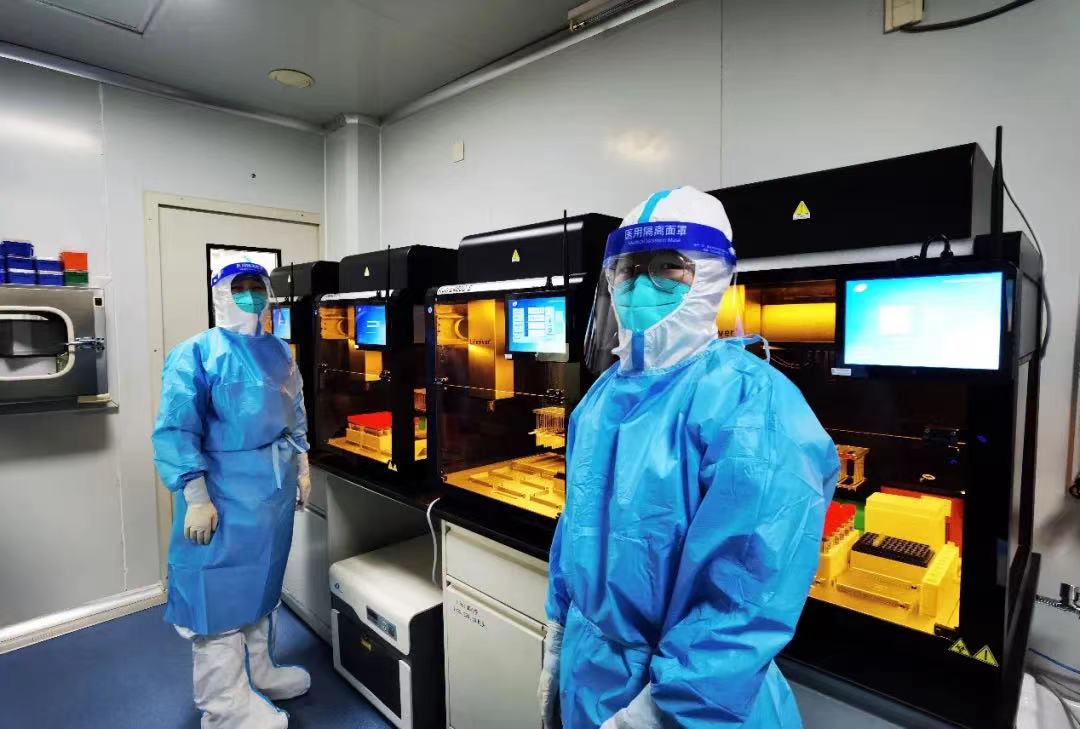Every day, more than 35,000 individuals on campus take nucleic acid tests. But how these Covid-19 test samples are processed?
Let’s take an inside look at Tsinghua Hospital’s Laboratory, where the test samples are processed for results.
“Sample preparation is that our sampling staff collect the samples and send them to the inspection cabin laboratory,” Dong Yuan, laboratory director, explained. “This process sounds easy, but it involves many people’s hard work.”
After the preparation of the samples is completed, the staff at the laboratory will allocate the corresponding quantities of nucleic acid extraction reagents and amplification reagents according to the number of samples to be tested and accurately prepare and subpackage the reaction system.
Due to a large number of testing samples, the laboratory personnel need to check and collect each tube of samples one by one and then shake them manually. Currently, more than 20,000 such tubes of test samples are collected from daily nucleic testing on campus.
Then, the samples are transferred to the pre-installed plate. “To add samples to each tube, we need to perform the three-step operation of unscrewing the cap, adding the sample, and then capping it. This process is basically completed by two staff members,” Dong said.

The third step is PCR product amplification, which means using PCR detection equipment to rapidly amplify the target DNA/RNA nucleic acid of the samples to be tested through high-temperature denaturation, low-temperature annealing, and suitable-temperature extension.
Earlier, there were only two PCR detecting instruments in the university hospital. To meet the daily testing requirement, two more PCR amplification instruments were installed in the hospital’s laboratory, increasing the detection capacity of the hospital from 736 tubes to more than 2,200 tubes per day.
The last step is reading the data. The final work is the statistical reporting of test data, the issuance of nucleic acid reports, the sterilization of the working environment, and the disposal of medical waste.
A team of 18 health workers is currently working on completing the test sample processing.
By Guo Lili, Sangeet



